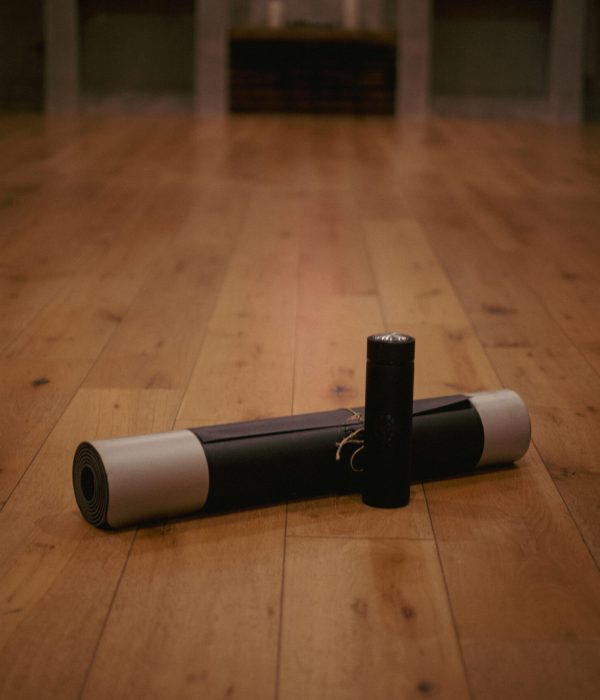At some point, every yoga student comes to the question: Do I step into the fire of a hot room, or settle into the cool steadiness of a regular practice?
It’s a choice that’s less about right or wrong, and more about what your body, mind, and heart are asking for in this season of your life. Both styles carry benefits. Both will shift how you feel: physically, mentally, and emotionally. And both can be woven together to create a balanced practice that grows with you over time.
Let’s explore what makes hot yoga distinct, how regular yoga serves as a steady anchor, and how to know which might be calling to you right now.
The Nature of Hot Yoga
Hot yoga turns up the temperature, usually between 95–105°F, and asks you to move through postures within that intensity. The first thing you notice is sweat—lots of it. The room itself becomes part of the practice, pushing the body to adapt in new ways.
Why the Heat?
Heat isn’t just about creating a “tougher workout.” Physiologically, warmth increases blood flow, allowing muscles and connective tissues to expand and lengthen more easily. A study published in the National Institutes of Health (published in May, 2020) showed that students in heated classes achieved a significantly higher range of motion compared to those in room-temperature settings.
The cardiovascular system also works harder. Regulating body temperature elevates the heart rate, making hot yoga feel closer to an aerobic workout than many regular yoga sessions. For people who crave intensity, this can be energizing and deeply satisfying.
Physical Benefits of Hot Yoga
- Flexibility with Safety: Warm tissues are less prone to strain, allowing deeper exploration of postures.
- Cardiovascular Fitness: The added demand supports heart health and builds stamina.
- Calorie Burn: Studies estimate hot yoga can burn 330–460 calories per 90-minute session, depending on intensity.
- Strength & Resilience: The heat challenges muscles, lungs, and focus, strengthening the whole system.
Mental and Emotional Shifts
Perhaps the biggest transformation comes in the mind. In the heat, there’s no room for overthinking. You can’t rehearse tomorrow’s meeting or replay yesterday’s argument—you can only breathe, stay, and meet the moment.
Students often describe this as a moving meditation: intensity silences mental chatter, leaving clarity and a surprising sense of lightness after class. Consistent hot yoga practice has also been linked to better sleep, reduced stress levels, and improved mood regulation.
The Grounding of Regular Yoga
Not every day—and not every body—wants heat. Regular yoga, practiced in a comfortable room (around 68–75°F), emphasizes alignment, breath, and accessibility.
The Strength of Steadiness
Regular yoga has been practiced for centuries without the aid of external heat. Its medicine lies in presence, technique, and adaptability. From strong, flowing Vinyasa classes to deeply restorative Yin sessions, non-heated yoga allows you to choose the pace and intensity that meets your body where it is.
Benefits of Regular Practice
- Accessibility for All: Beginners, older adults, and those with health conditions often find regular yoga a safe and welcoming entry point.
- Alignment & Injury Prevention: Without the distraction of heat, students can refine posture and develop balanced strength.
- Nervous System Regulation: Gentle breath-focused practices calm the mind and support recovery from anxiety, depression, or burnout.
- Long-Term Sustainability: Regular yoga is adaptable—you can practice at home, outdoors, or in the studio, making it easy to integrate into daily life.
Emotional Landscape
The cool steadiness of regular yoga creates more space for introspection. Rather than being pushed into presence by external heat, you’re invited to soften into it. This can make regular yoga especially beneficial for those needing gentleness, patience, and grounding.
How They Differ in the Body
- Heart Rate: Hot yoga elevates heart rate significantly more, simulating moderate cardio. Regular yoga stays steadier, emphasizing endurance and controlled strength.
- Hydration: Heated classes demand careful hydration and electrolyte balance. In regular yoga, hydration remains important but less critical.
- Sweat Response: Expect profuse sweating in hot yoga. In regular yoga, sweat comes naturally but at a more moderate level.
- Mental Focus: Hot yoga creates laser-like presence through intensity. Regular yoga fosters quiet reflection and gradual unfolding.
- Community Feel: Heated rooms often bond practitioners through shared challenge. Regular classes may feel more personal and contemplative.
Who Might Choose Hot Yoga?
Hot yoga often attracts:
- Fitness enthusiasts who thrive on intensity
- Those who enjoy “sweating it out” as release
- People in colder climates looking for warmth and energy in winter
- Students who want both strength and cardiovascular benefits in a single class
Important Note: Certain conditions require extra care. If you have heart concerns, blood pressure issues, are pregnant, or take medications that affect heat regulation, consult a doctor before trying hot yoga. Beginners should always start with shorter classes, hydrate well, and honor their limits.
Who Might Choose Regular Yoga?
Regular yoga is ideal for:
- Beginners wanting to learn alignment and breath control
- Seniors or those in recovery from injury
- Anyone managing chronic conditions or needing gentle movement
- Students who value long-term, adaptable practice they can take anywhere
The beauty of non-heated yoga is its variety:
- Restorative for deep recovery
- Vinyasa for flowing strength
- Yin for connective tissue release
- Hatha for foundational poses
- Iyengar for precision and therapeutic application
The Science of Choice
Science shows both practices can lower cortisol (the stress hormone), improve mood, and increase flexibility. The difference lies in intensity. Hot yoga engages the cardiovascular system more robustly, while regular yoga offers sustainable, adaptable pathways to wellness.
Think of hot yoga as the spark that ignites transformation quickly. Regular yoga is the steady flame that keeps burning over time. Both are valuable. Together, they create balance.
Rewild Yoga: Where Both Paths Meet
At Rewild Yoga in Columbus, we believe your body already knows what it needs. Some days, the fire of hot yoga is the medicine—burning through resistance, energizing, and clarifying. Other days, the cool spaciousness of regular practice is the balm—soothing, grounding, and restorative.
Our teachers are here to guide you safely in both, helping you discover what feels right for your body in the moment. We don’t push; we invite. We hold space for exploration, for trial and error, and for the unfolding of your unique journey.
Ready to Explore Your Practice?
Hot yoga or regular yoga? The answer isn’t fixed. The deeper question is: What do you need today?
Step into the heat or into the stillness. Both are waiting for you. Join us at Rewild Yoga in Columbus and discover the path your body is asking for today.


